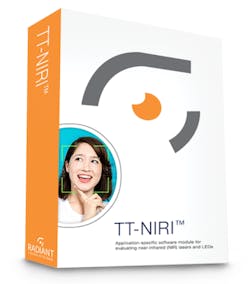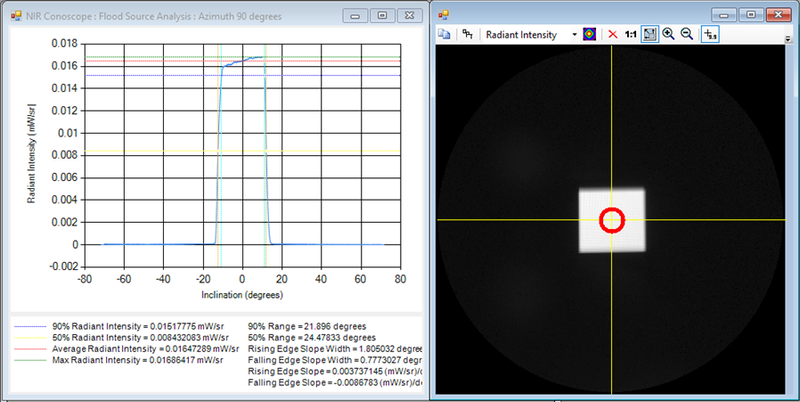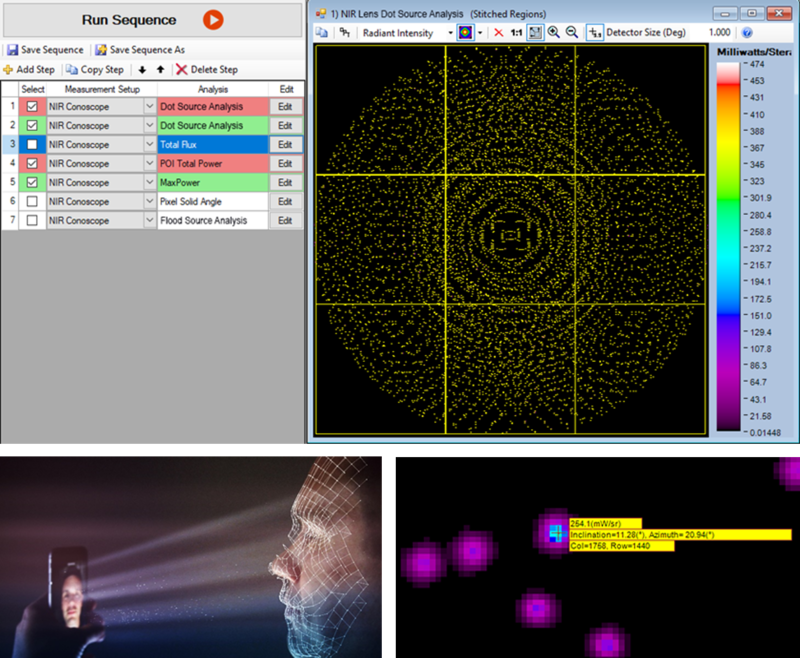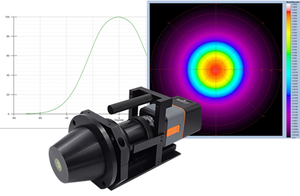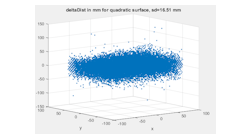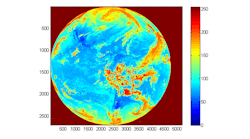Near-infrared (near-IR or NIR) emissions of light are used by devices to sense three-dimensional objects while eliminating visible light interference and human visual distraction. However, because NIR emissions are invisible, test equipment must be used to ensure adequate intensity and distribution of NIR light for object detection.
Part of the Radiant Vision Systems TrueTest™ Software family, the TT-NIRI module provides the benefits of TrueTest Software to efficiently perform image-based measurements, but with application-specific tests to evaluate the accuracy of 850 or 940 nm* NIR LEDs, lasers, and structured light patterns used for:
- Facial and gesture recognition
- Eye tracking and iris detection
- Lidar for autonomous vehicles, drones, robotics
- Simultaneous localization and mapping (SLAM)
- Other near-infrared 3D sensing applications
A comprehensive NIR test solution from Radiant combines the TT-NIRI application-specific software module with the Radiant NIR Intensity Lens solution to perform rapid, automated visual inspection of NIR emitters. Utilizing the Fourier optics of the NIR Intensity Lens solution, TT-NIRI evaluates all angular emissions of a source in a single image, as well as all dots in a structured light pattern created by diffractive optical elements (or DOE).A Radiant NIR test solution captures and processes data much faster and more consistently than a goniometric or spot measurement device. DOE dot source analytics captured by the NIR Intensity Lens and TT-NIRI software offer comprehensive radiometric data, which cannot be acquired using alternative methods such as casting a dot pattern against a wall or other Lambertian surface.
Comprehensive NIR Test Suite
Evaluating the accuracy of NIR emissions relies on radiometric measurements to determine the scope and intensity of NIR-emitting sources, as well as the angular position of precise emission points (dots) against defined tolerances. TT-NIRI provides a comprehensive NIR test suite that allows users to define measurement parameters and pass/fail criteria for specific points of interest in an image. The software module includes specific tests for NIR light source measurement including:
- Total Flux (mW or W)
- POI Total Power
- Max Power
- Pixel Solid Angle
- Inclination Solid Angle
- Dot Source Analysis
- Flood Source Analysis
- Points of Interest
- Image Export
Angular Distribution of a Source
Cross-section radar plot in TT-NIRI software showing radiant intensity as a function of angle for an NIR LED light distribution.
Diffuse "Flood" Source Analysis
Some NIR applications rely on a strong flash of NIR light (sometimes referred to as “flood” distribution) for proximity sensing using a time-of-flight (ToF) measurement. For example, in facial recognition, flood emitters can be used to detect the presence of a face and determine focus distance, even in darkness. The “Flood Source Analysis” test in TT-NIRI software measures the flood function of these light sources to ensure they adhere to the intended performance parameters, and to identify any irregularities such as hot spots or intensity fall-off.
Analyze flood distributions from diffuse NIR light sources to evaluate uniformity across angular emissions (in terms of intensity at each degree), center values, angular fall-off, hot-spots, including:
- Full width half max (or full width 90% max, etc.)
- Average radiant intensity across the cross section
- Max radiant intensity across the cross section
- Slope widths (how long it takes the sample to “fall off” in degrees)
- Edge slopes (mW/sr) per degree (metric for how quickly or slowly the sample “falls off” on the edges)
- Center of the sample (degrees)
Structured Light Dot Pattern Analysis
TT-NIRI includes a “Dot Source Analysis” test to output uniformity, max intensity, and flux statistics for each dot in a structured light pattern that is emitted by an NIR laser through a DOE. This test can analyze individual dots or regions of dots to ensure the patterns are projected in the correct angle (inclination, azimuth) and with the correct intensity (W/sr).
Close-up on the analysis of dot source emissions used for 3D sensing like facial or gesture recognition. Each dot in the pattern can be evaluated for accurate position and intensity, with data output including:
- Location in pixels (x,y)
- Location in inclination/azimuth (degrees)
- Intensity (W/sr)
- Peak Average Intensity (mW/sr)
- Peak Solid Angle (sr)
- Pixels at Maximum Peak
- Spot Power Uniformity (%)
- Maximum Peak Radius (°)
- Total Flux (mW or W)
- DOE Flux (mW)
- Image Export
As with all modules of the TrueTest platform, tests from the TT-NIRI test library can be added to a sequence, and test parameters and pass/fail settings are input for each test. The entire sequence can be run end-to-end automatically and stored so multiple sequences can be created and recalled as needed. Individual test results are displayed and can be recorded in a report.
Complete Measurement Solution
TT-NIRI provides application-specific testing for complete NIR emission measurement. TT-NIRI is used with a 16-megapixel ProMetric Y Imaging Radiometer (IR-PMY16) paired and calibrated with the Radiant NIR Intensity Lens to provide a turnkey radiometric imaging solution that meets the form factor and cost requirements of your application.Supported by Radiant's global support staff and distributor network, TT-NIRI is field-proven and has been used to test 3D sensing technology for the latest high-value devices in electronics and automotive applications.
TT-NIRI Module Key Features and Highlights:
- Quickly apply pre-defined tests for NIR emission measurement.
- Characterize emitters in the lab for R&D; use data as a benchmark during production for real-time quality control.
- Capture comprehensive angular measurements simultaneously for optimal production-line efficiency.
- Software test sequencing and hardware integration allow automated production-level testing.
- Easily transition data files within the Radiant family of software.
- Use data analysis functions including bitmaps, isometric plots, radar plots, and cross-sections.
